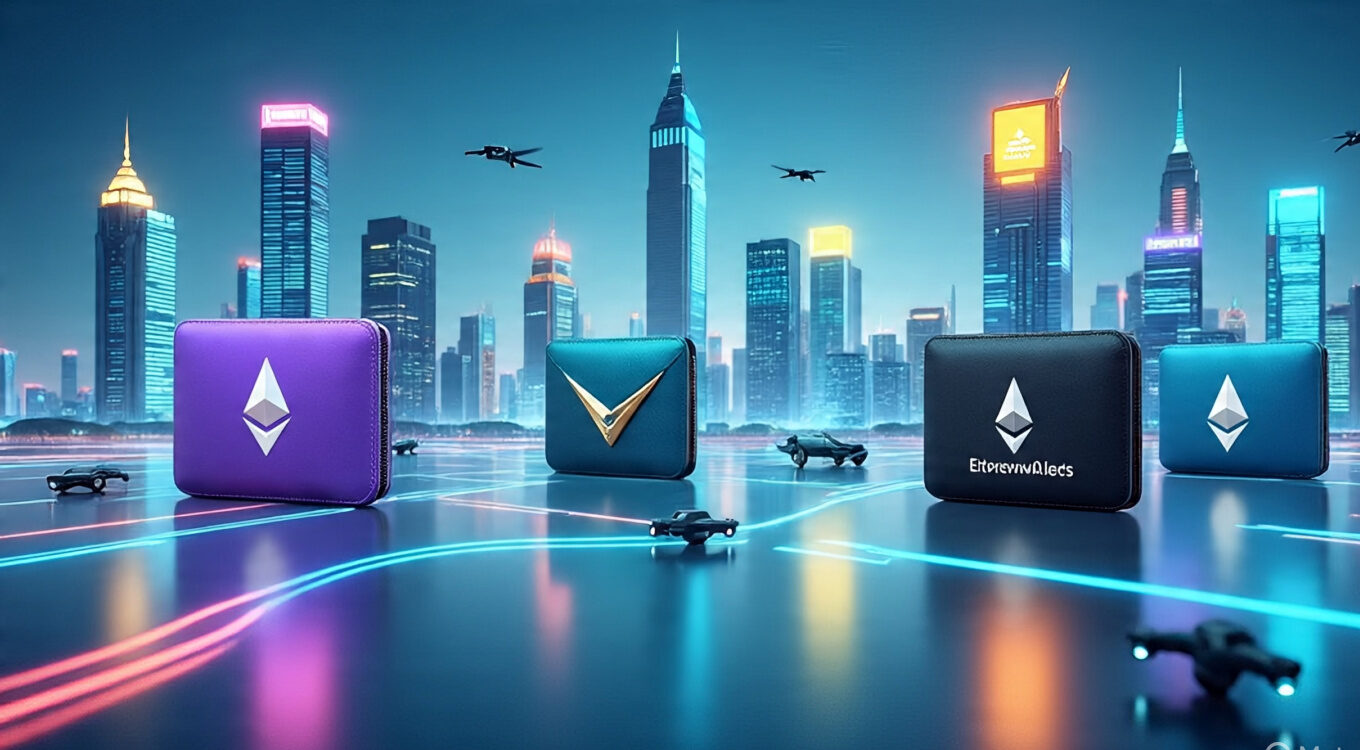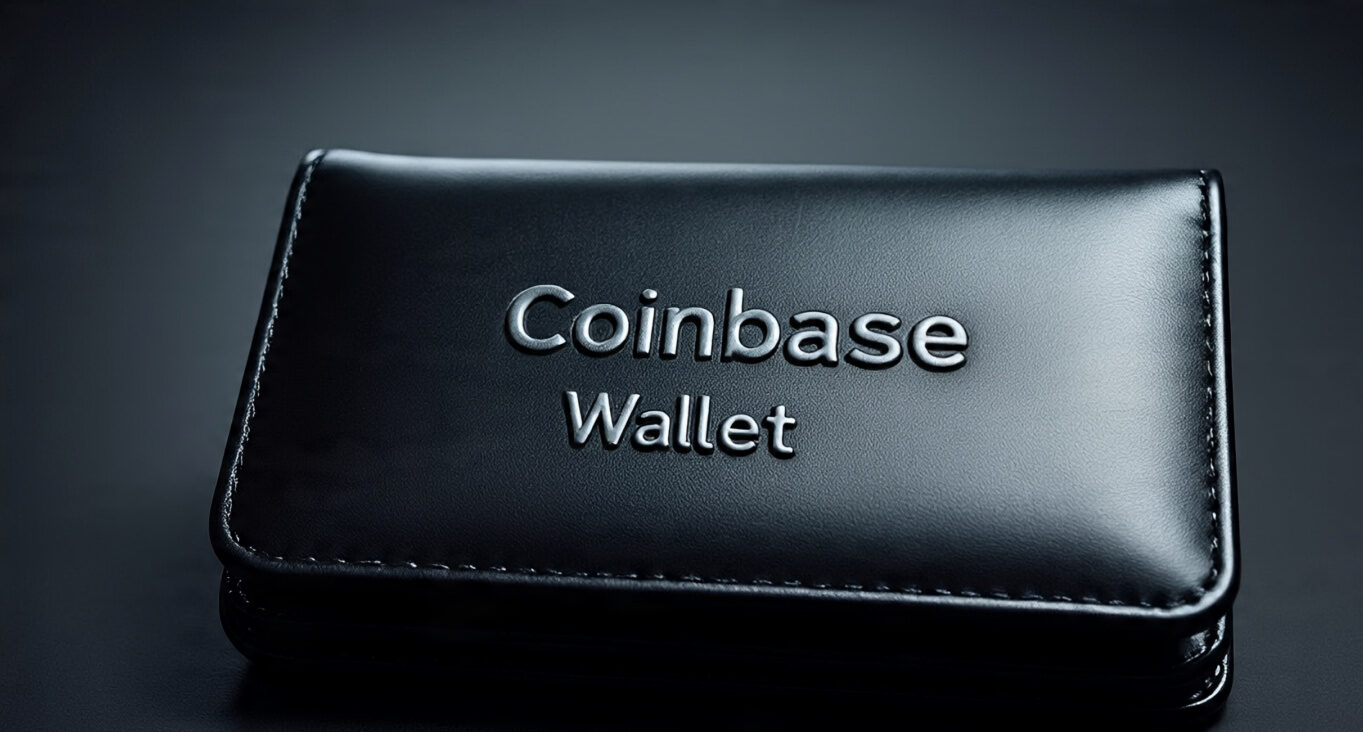Best 7 Secure Ethereum Wallets to Buy Now Guaranteed Safe

The secure Ethereum wallet market has evolved dramatically in 2025, with new security innovations and enhanced user experiences transforming how investors protect their digital assets. As MetaMask remains a popular choice for most Ethereum users, privacy concerns and specific use cases like staking have led users to seek alternatives, while factors like security, usability, and supported cryptocurrencies have become paramount in wallet selection.
The landscape of hardware wallets and software wallets has expanded significantly, offering users unprecedented security features including multi-factor authentication, cold storage capabilities, and advanced private key protection mechanisms. Modern wallets now incorporate robust security features such as two-factor authentication (2FA), biometric security measures, offline storage options, and encryption protocols to ensure comprehensive protection against threats.
When evaluating Ethereum wallet security, several key factors distinguish exceptional wallets from mediocre ones. The most secure wallets combine hardware security modules, seed phrase protection, air-gapped storage, and seamless integration with popular DeFi protocols. Security features like secure elements, offline key generation, and reliable backup methods have become essential, with the ability to verify signature data being crucial for preventing sophisticated hacks.
Ethereum Wallet Security Fundamentals
What Makes an Ethereum Wallet Secure
Ethereum wallet security encompasses multiple layers of protection designed to safeguard your digital assets from various threats. The foundation of any secure crypto wallet lies in its private key management system, which determines how your wallet generates, stores, and protects the cryptographic keys that control access to your funds. Modern security protocols include encryption protocols, two-factor authentication (2FA), and offline storage options to ensure robust protection against threats.
The most secure wallets implement hierarchical deterministic (HD) wallet technology, which generates multiple addresses from a single seed phrase or recovery phrase. This approach not only enhances privacy by using different addresses for each transaction but also simplifies the backup process. Hardware wallets take security a step further by storing private keys in dedicated hardware security modules that remain isolated from internet-connected devices, effectively creating an air-gapped environment that’s virtually immune to online attacks.
Multi-signature functionality represents another crucial security layer, requiring multiple cryptographic signatures to authorize transactions. This feature proves particularly valuable for institutional users or individuals managing substantial crypto assets. Additionally, modern wallets incorporate biometric authentication, pin protection, and time-locked transactions to provide comprehensive security coverage against both digital and physical threats.
Types of Ethereum Wallets: Hot vs. Cold Storage
The distinction between hot wallets and cold wallets is fundamental to selecting the appropriate security level for your needs. Hot wallets, including browser extensions, mobile apps, and desktop applications, maintain constant internet connectivity, enabling seamless interaction with DeFi protocols, decentralized exchanges, and Web3 applications. While convenient for frequent trading and DeFi activities, hot wallets face increased exposure to online threats such as malware, phishing attacks, and exchange hacks.
Cold storage solutions, primarily hardware wallets and paper wallets, keep private keys completely offline, significantly reducing attack vectors. Hardware wallets like the Ledger Nano X provide superior security through offline storage, making them resistant to hacking attempts while supporting over 1,500 assets. These devices only connect to the internet during transaction signing, maintaining security while enabling necessary blockchain interactions.
Hybrid approaches have emerged as popular middle-ground solutions, combining the convenience of hot wallets with the security of cold storage. Many users employ a strategy where small amounts for daily transactions remain in hot wallets, while larger holdings stay secured in hardware devices. This approach optimizes both security and usability, allowing users to benefit from DeFi yield farming, NFT trading, and regular transactions without compromising their long-term investment security.
Top 7 Secure Ethereum Wallets for 2025

1. Ledger Nano X – Premium Hardware Security
Ledger Nano X stands as the gold standard for hardware wallet security, offering uncompromising protection for Ethereum and over 5,500 other cryptocurrencies. This cold storage device incorporates a secure element chip (CC EAL5+) that provides bank-level security for private key storage and transaction signing. The device’s Bluetooth connectivity enables wireless interaction with the Ledger Live mobile app, allowing users to manage their portfolio and execute transactions securely from their smartphones.
The Ledger Nano X excels in DeFi integration, supporting popular protocols through compatible browser extensions like MetaMask. Users can strengthen their crypto security by ordering the Ledger Nano X and using it with MetaMask to enhance their overall protection. The device’s 2.2-inch curved screen displays transaction details clearly, enabling users to verify all transaction parameters before signing.
Security features include PIN protection, recovery phrase backup (24-word seed phrase), and passphrase support for additional account creation. The device’s firmware receives regular security updates, ensuring protection against emerging threats. Battery life extends up to 8 hours of active use, with several months of standby time, making it ideal for users who frequently interact with Web3 applications.
Pricing starts at $149, representing excellent value considering the comprehensive security features and extensive cryptocurrency support. The Ledger Nano X particularly benefits users managing diverse crypto portfolios, frequent DeFi participants, and anyone prioritizing maximum security for substantial digital asset holdings.
2. Trezor Safe 5 – Open Source Excellence
Trezor Safe 5 represents the latest evolution in open-source hardware wallet technology, released in early 2025 as the evolved version of the Safe 3 model with enhanced usability, stronger physical durability, and native support for Ethereum staking and NFTs. The device’s open-source firmware allows the crypto community to audit and verify security implementations, providing transparency that proprietary solutions cannot match.
The Safe 5 introduces revolutionary touch screen interface technology, replacing physical buttons with an intuitive touchscreen that enhances user experience while maintaining security. The device supports Ethereum staking natively, allowing users to participate in Ethereum 2.0 validation directly from their hardware wallet without exposing private keys to online environments. NFT storage capabilities include metadata display and collection management features.
Advanced security features encompass Shamir Backup (SLIP-39), enabling users to split their recovery phrase into multiple shares for enhanced backup security. The device implements U2F authentication for added protection and supports passphrase encryption for creating hidden accounts. Firmware updates occur through a secure bootloader that prevents malicious modifications.
Build quality improvements include reinforced USB-C connectivity, scratch-resistant screen coating, and enhanced drop resistance. The device integrates seamlessly with Trezor Suite, providing comprehensive portfolio management, DeFi protocol access, and coin mixing services for enhanced privacy. Pricing begins at $169, positioning it as a premium option for security-conscious users who value open-source transparency.
3. MetaMask – Browser Extension Champion
MetaMask remains the most widely adopted Ethereum wallet and Web3 gateway, serving over 30 million users worldwide through its browser extension and mobile app versions. MetaMask remains the obvious top choice for most Ethereum users in 2025, thanks to its widespread adoption and rich feature set. The wallet’s seamless integration with decentralized applications (dApps) makes it indispensable for DeFi activities, NFT marketplaces, and blockchain gaming.
Security enhancements in 2025 include improved phishing protection, transaction simulation before signing, and enhanced private key encryption. The wallet now features hardware wallet integration, allowing users to combine MetaMask’s convenience with Ledger or Trezor security. Seed phrase protection includes secure backup recommendations and vault functionality for additional private key layers.
DeFi integration remains MetaMask’s strongest feature, providing native access to Uniswap, Compound, Aave, and hundreds of other protocols. The MetaMask Swaps feature aggregates liquidity across multiple decentralized exchanges, ensuring optimal pricing for token exchanges. Portfolio tracking includes yield farming positions, staking rewards, and NFT collections.
Mobile app functionality mirrors the browser extension, featuring biometric authentication, transaction history, and dApp browser capabilities. Gas fee estimation helps users optimize transaction costs during network congestion. The wallet supports custom networks, enabling interaction with Layer 2 solutions like Polygon, Arbitrum, and Optimism.
Pricing is completely free, with MetaMask generating revenue through swap fees and premium features. The wallet suits beginners entering Web3, active DeFi users, and anyone requiring frequent blockchain interactions.
4. Trust Wallet – Mobile-First Security
Trust Wallet has emerged as the leading mobile wallet for Ethereum and multi-chain cryptocurrency management, offering comprehensive security features optimized for smartphone usage. Trust Wallet is a top pick for Ethereum users who prioritize mobile accessibility, providing seamless access to DeFi protocols, NFT marketplaces, and Web3 applications directly from mobile devices.
Security architecture incorporates client-side encryption, ensuring private keys never leave the user’s device. The wallet comprises reliable security features, including two-factor authentication (2FA), biometric security measures, and a four-digit passcode for enhanced protection. Biometric authentication supports both fingerprint and face recognition on supported devices, while passcode protection provides backup security for older devices.
Multi-chain support extends beyond Ethereum to include Binance Smart Chain, Polygon, Solana, and over 70 other blockchains, making it ideal for users with diversified crypto portfolios. DeFi integration includes built-in DEX functionality, staking services, and yield farming opportunities across multiple networks. NFT support encompasses viewing, sending, and receiving non-fungible tokens with metadata display.
dApp browser functionality enables direct interaction with decentralized applications without leaving the wallet interface. WalletConnect integration provides secure connections to desktop DeFi platforms while maintaining mobile control. Push notifications alert users to incoming transactions and market price movements.
Educational resources include crypto guides, security tutorials, and DeFi explainers integrated within the app interface. The wallet’s customer support provides 24/7 assistance through multiple channels. Trust Wallet remains completely free, generating revenue through staking partnerships and exchange integrations.
5. Coinbase Wallet – Enterprise-Grade Protection

Coinbase Wallet offers institutional-level security for both individual and enterprise Ethereum users, combining the reliability of the Coinbase brand with advanced self-custody features. Unlike the main Coinbase exchange, Coinbase Wallet provides complete private key control while maintaining the user-friendly interface that made Coinbase famous among crypto newcomers.
Security infrastructure utilizes multi-party computation (MPC) technology for enhanced private key protection, distributing key generation across multiple secure environments. Biometric authentication includes Face ID and Touch ID support on iOS devices, while Android users benefit from fingerprint and pattern protection. Cloud backup options provide secure recovery phrase storage through Google Drive and iCloud integration.
DeFi ecosystem access includes native support for Compound, Uniswap, OpenSea, and hundreds of other decentralized applications. Portfolio tracking features provide comprehensive insights into staking rewards, yield farming returns, and NFT valuations. Real-time price alerts help users monitor market movements and optimize trading decisions.
Cross-platform compatibility ensures seamless synchronization between mobile apps and browser extensions. WalletConnect integration enables secure connections to desktop DeFi platforms while maintaining mobile convenience. Transaction batching reduces gas fees for multiple operations, particularly beneficial during network congestion.
Regulatory compliance meets institutional standards, making it suitable for businesses and organizations managing crypto assets. Customer support provides dedicated assistance for wallet-related issues, separate from exchange support. Pricing remains free for basic functionality, with premium features available for enterprise customers.
6. Exodus Wallet – User-Friendly Multi-Chain
Exodus Wallet combines exceptional user interface design with robust security features, making it an ideal choice for users seeking beautiful, intuitive cryptocurrency management. Supporting over 260 cryptocurrencies in one place, Exodus provides comprehensive multi-chain support while maintaining the simplicity that crypto newcomers appreciate.
Security features include client-side encryption ensuring private keys remain under user control, password protection for additional access security, and backup options through secure 12-word recovery phrases. Desktop and mobile synchronization enables portfolio access across devices while maintaining security through local private key storage.
Built-in exchange functionality provides access to cryptocurrency swaps without leaving the wallet interface, utilizing partnerships with leading exchange services to ensure competitive rates. Portfolio tracking includes real-time price updates, performance analytics, and transaction history with clear visualizations. Staking services support Ethereum 2.0, Cardano, Solana, and other proof-of-stake networks directly within the wallet.
DeFi integration includes Web3 connectivity for accessing decentralized applications, though more limited compared to specialized browser extensions like MetaMask. NFT support encompasses viewing and managing non-fungible tokens with high-resolution image display and metadata information.
Customer support provides comprehensive assistance through multiple channels, including live chat, email support, and extensive knowledge base resources. Educational content helps users understand cryptocurrency concepts, security best practices, and DeFi opportunities. Pricing follows a freemium model, with basic features available free and premium services requiring subscription fees.
7. Argent Wallet – Smart Contract Innovation
Argent Wallet represents the cutting-edge of smart contract wallet technology, implementing account abstraction to provide enhanced security and user experience improvements impossible with traditional externally owned accounts (EOAs). The wallet landscape has been transformed by account abstraction, creating new options that are both secure and user-friendly, positioning Argent at the forefront of Web3 wallet evolution.
Security innovations include social recovery mechanisms that eliminate single points of failure associated with traditional seed phrases. Users can designate trusted contacts (guardians) who can help recover wallet access without exposing private keys. Daily spending limits provide additional protection against unauthorized access. While transaction delays for large transfers allow time to cancel suspicious activities.
Layer 2 optimization focuses primarily on Arbitrum and zkSync, providing significantly reduced gas fees compared to Ethereum mainnet transactions. DeFi integration includes curated protocol access with yield farming, lending, and trading opportunities optimized for Layer 2 environments. Portfolio management features provide comprehensive tracking of positions across multiple DeFi protocols.
User experience innovations include gasless transactions through meta-transaction technology, email recovery options, and progressive onboarding that gradually introduces advanced features. Mobile-first design ensures optimal smartphone usage, while Web3 connectivity enables dApp interactions through WalletConnect integration.
Security audits by leading firms ensure smart contract reliability, while bug bounty programs incentivize continuous security testing. Community governance allows users to participate in wallet development decisions through decentralized governance mechanisms. Pricing includes free basic functionality with premium features available through subscription tiers.
Advanced Security Considerations
Private Key Management Best Practices
Private key security represents the most critical aspect of cryptocurrency wallet protection. As compromised keys result in permanent asset loss without recourse. Best practices include never storing private keys digitally, using hardware wallets for substantial holdings, and implementing multi-signature arrangements for institutional assets. Seed phrase storage should utilize metal backup solutions resistant to fire, water, and physical damage.
Key derivation following BIP-39 and BIP-44 standards ensures compatibility across wallet implementations while maintaining security. Users should understand hierarchical deterministic wallet benefits, including address reuse prevention and simplified backup procedures. Passphrase protection adds additional security layers, creating hidden accounts accessible only with correct passphrase combinations.
Multi-Signature Implementation Strategies
Multi-signature wallets require multiple cryptographic signatures to authorize transactions, significantly reducing single points of failure. 2-of-3 configurations represent optimal balances between security and usability, requiring any two signatures from three designated keys. Corporate implementations often utilize 3-of-5 or higher thresholds, distributing control among multiple executives or departments.
Smart contract multi-sig solutions like Gnosis Safe provide advanced features including time locks, spending limits, and transaction batching. Safe{Wallet} offers enhanced security and customization features. Such as multiple owners and transaction guards, making it easier to manage crypto assets. Social recovery mechanisms enable trusted contacts to assist in account recovery without exposing private keys.
Also Read: Buy NFT Crypto Wallets 12 Best Options That Never Fail
Conclusion
The secure Ethereum wallet landscape in 2025 offers unprecedented options for protecting digital assets. While maintaining convenient access to the expanding Web3 ecosystem. Hardware wallets like Ledger Nano X and Trezor Safe 5 provide maximum security for long-term storage. While software solutions such as MetaMask and Trust Wallet enable seamless DeFi interactions.
Smart contract wallets like Argent represent the future of crypto wallet technology. Implementing account abstraction and social recovery features that enhance both security and usability. The key to optimal cryptocurrency security lies in your specific needs. Risk tolerance, and usage patterns, then selecting wallet solutions that align with these requirements.
While implementing proper backup procedures and security practices. Whether you’re a DeFi enthusiast, NFT collector, or long-term crypto investor. The seven wallets detailed in this guide provide reliable foundations for secure Ethereum asset management in 2025 and beyond.




